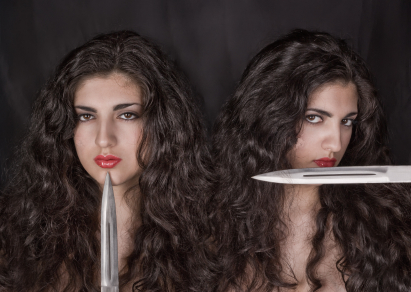Working with Artists - Part 2
“I would never say that”, she said. | Image by SYoshiko
So, you’ve written a book or short story and you’d like to commission an artist to illustrate your character, (or characters). Great! Now what?
This is second article in a short series on finding and working with artists to bring your vision to life. In the first part I covered Commercial vs. Non-commercial use and Copyright considerations.
In Part II I’ll talk about Vision and References.
Vision
This is my short-hand term for the picture that you, the author, have in your head. Another term for it is ‘scene’. This is the image you want to be depicted by the artist. Unfortunately for you, the artist does NOT have your vision. It is up to you to provide it.
Give your artist a written description of the scene you wish depicted. Some of the things to include are:
Give your artist a written description of the scene you wish depicted. Some of the things to include are:
Number and position of characters with respect to each other
Character age, sex, appearance, distinguishing physical features, etc
Character stance/pose or activity
Character dress
Scene background (i.e. where does the scene take place? In a room, outside, on ship? What are some of the objects in the scene?)
Time of day and weather
Time period (modern? medieval? futuristic?)
Provide as much detail as possible. Artists generally prefer to receive more, rather than less detail. This is extremely important. Many artists I have talked with complain of clients who only have a vague idea of the scene they wish depicted and seem to expect the artist will somehow ‘get it right’ with little or no direction.
If you have a character profile written, provide it to the artist. If you do not have a character profile, create one. Artists find the information in character profiles invaluable, even the details that are ‘not visible’ such as personality, quirks, and character back story. All of these allow the artist to get a feel of the character.
When I commissioned SYoshiko to depict Lady Merreth I provided her with Lady Merreth’s character profile, and a one page description of Lady Merreth’s world.
References
Lady Merreth Reference from iStock
You may not be all that good at describing elements in the scene you wish depicted. References can be an enormous help. References are pictures of items (or even people) that you provide to the artist to assist them. For example, if your character is a knight, you could provide images or links to images of swords, horses, and armour that are close to the vision you have in your head to assist the artist.
I gave SYoshiko references for Merreth’s hat, boots, sword, dirks, and crossbow. I found a model on iStockphoto that I wanted Merreth to look like and gave her that as well. I even provided her with images I had commissioned from other artists and told her what I liked and did not like about them.
The more concrete information you can provide your artist, the happier you both will be with both the creative process and the final result.

